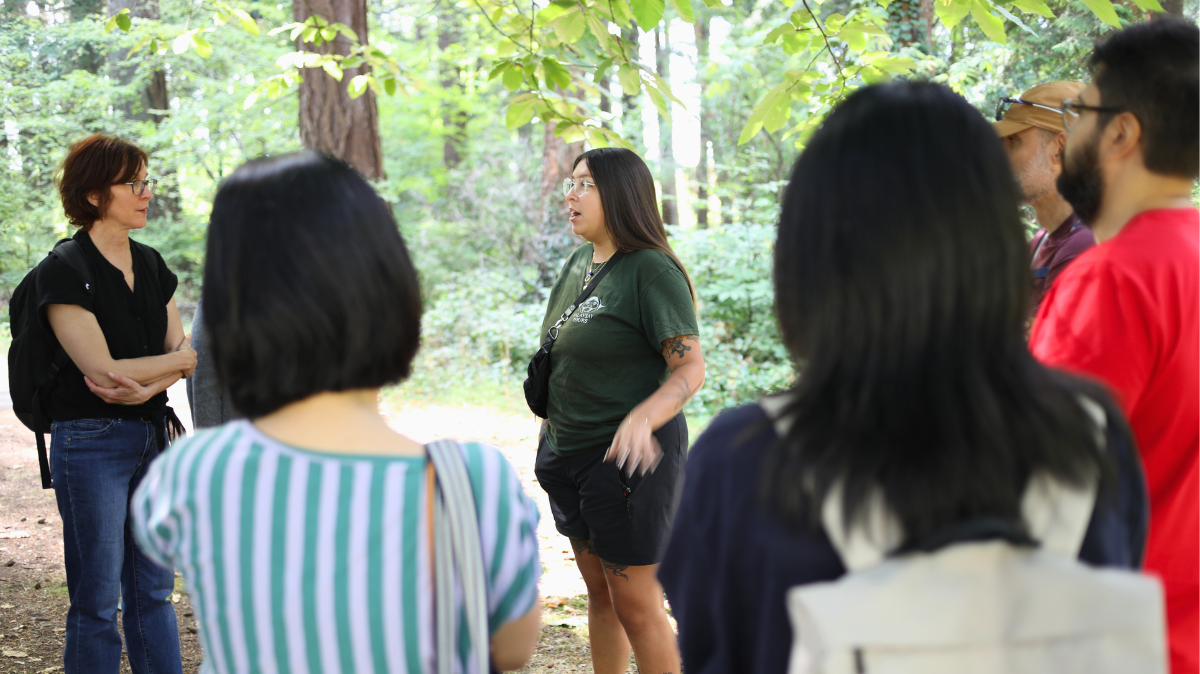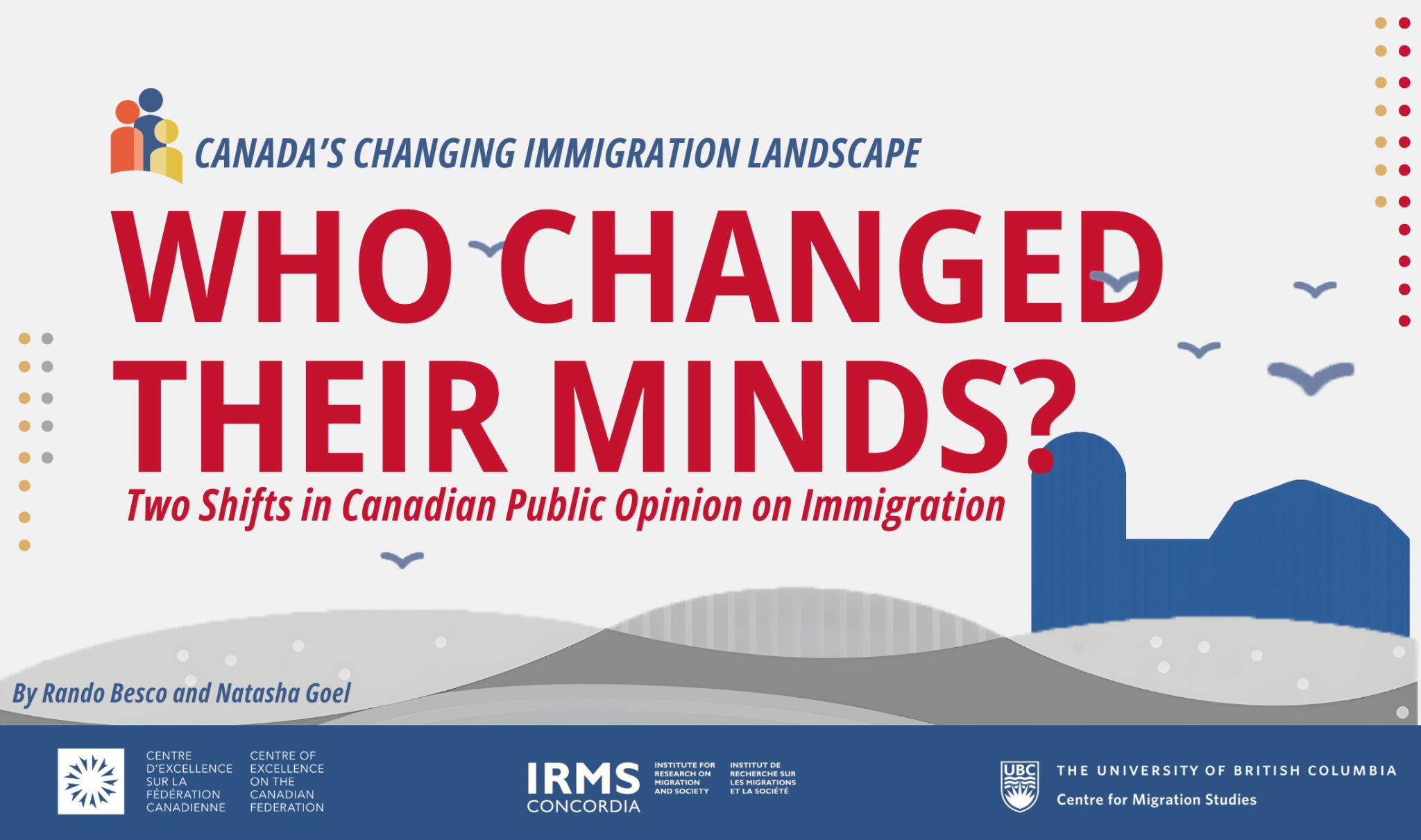

Picture by Elizabeth “Biz” Nijdam.
On September 11, members of the CMS Migration & Indigeneity research group and CMS staff joined a nature walk near X̱wáýx̱way, once a large Coast Salish village site in what is now Stanley Park.
Led by Talaysay Tours and guided by Seraphine Lewis (Kwii Gee Iiwans) of the Skwxwú7mesh (Squamish) and Haida First Nation, the tour invited participants to learn how Indigenous peoples have long drawn food, medicine, and teachings from the land.
We began by learning the place name: X̱wáýx̱way (pronounced “Whoi Whoi”), once one of the prominent villages in the area and named after a mask ceremony. “That’s how we would like you to call it,” Seraphine explained. Unlike settler naming practices, Indigenous place names do not commemorate individuals; instead, they reflect the land itself — its characteristics, cultural significance, and the relationships that connect people, place, and more-than-human beings.


Seraphine Lewis, Cultural Ambassador at Talaysay Tours. Picture by Elizabeth “Biz” Nijdam.
Walking along the forest trails, Seraphine shared teachings about the native plants and trees that have long sustained life. Among many others, she spoke of maple trees that sweeten the soil; Douglas fir, whose smoke once carried messages; nurse trees, fallen logs that nurture new growth; skunk cabbage, a survival food and a natural storage material; red alder, its smoke essential for preserving fish; horsetails, ancient plants with medicinal and edible uses; and hemlock, whose tender tips can be eaten. These teachings revealed the deep relationality between people, plants, and land, offering a glimpse into Indigenous worldviews and knowledge, which colonialism has long sought, and continues to seek, to erase and replace.
Yet despite these colonial assaults, Indigenous peoples have safeguarded their knowledge and are revitalizing languages, restoring practices, and reconnecting with ancestral territories. For non-Indigenous participants, learning from the land requires humility, openness, and readiness to embrace different ways of knowing. Such encounters can help build stronger, more respectful relationships between Indigenous and non-Indigenous peoples.
We are grateful to Talaysay Tours for guiding us and for sharing teachings grounded in land-based education — teachings that challenge us to reflect on our responsibilities in research, community, and everyday life.
About the Migration & Indigeneity Research Group
The Migration & Indigeneity research group is an interdisciplinary group of migration scholars and students conducting research about transnational migration and exploring the intersection of migration and Indigeneity. This group has also been focusing on developing better relationships with local Indigenous communities, lands, and water to become better educators and researchers as settlers on Indigenous lands. It is coordinated by Ayaka Yoshimizu.


